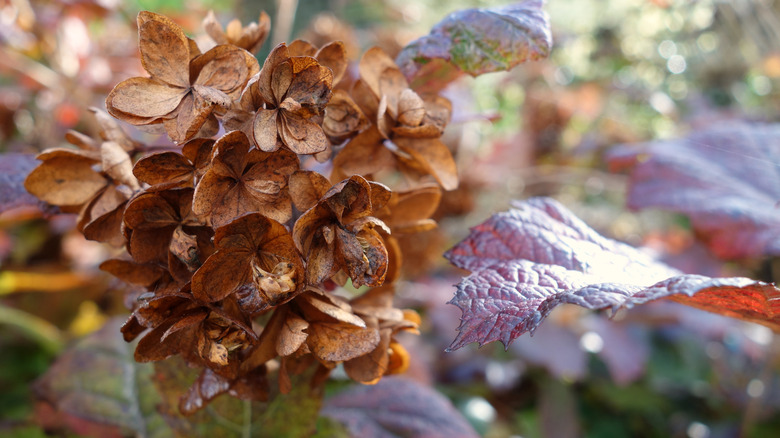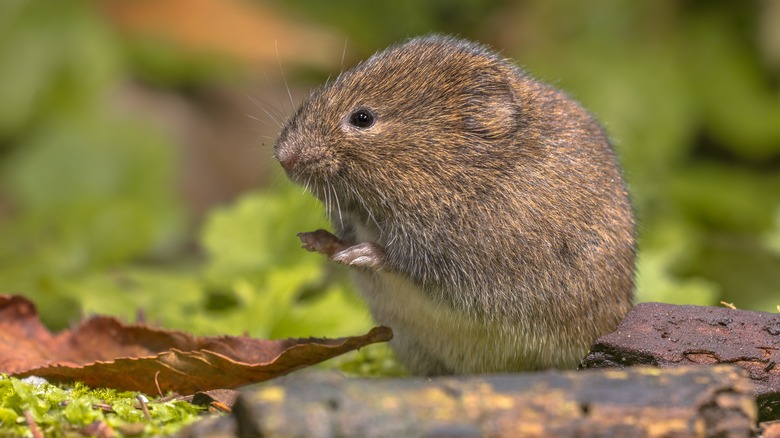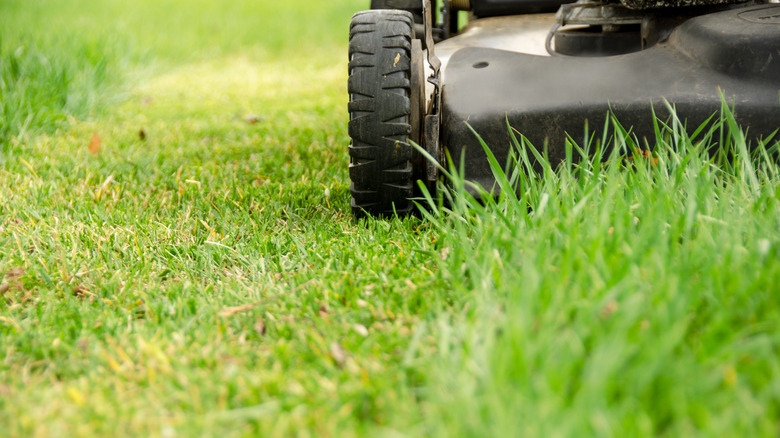The Garden Pest That Might Be Killing Your Hydrangeas Below Ground
Hydrangeas are a fan-favorite among gardeners because they not only add a pop of color to landscaping but take up a lot of real estate with their big, bushy blooms. They range from white to pink to blue, adding a touch of charm to a backyard or some major curb appeal to a front yard. But they can also detract — rather than add — to your garden design when they begin to wilt and die. If you notice your hydrangea flowers browning, it could be due to pests. While most gardeners would suspect it's because of pests like black vine weevil or nematodes, there is another surprising pest that could be the culprit: voles, which munch on hydrangea roots.
Voles are small rodents that look like a cross between a mouse and a hamster. While they might be relatively cute as far as pests go, they can cause extensive damage to your garden and plants because they predominantly live underground, creating large burrow networks to get around. Here is how to figure out if voles are killing your hydrangeas, and what to do about it.
How to know if voles are killing your hydrangeas
One way to tell that voles are the culprit behind your dying hydrangeas is to look for teeth or gnawing marks on the plant. You can see them everywhere, from the branches to the leaves. You will know it's them in particular based on how the marks look. They're messy eaters, so the teeth marks will be haphazard and inconsistent. Their bite marks are also very small — they should be around 3/8 of an inch long. You can also see them on the roots. Hungry voles will munch away on the roots until the plant begins to die. To check, give one of the hydrangeas a tug. If the plant easily comes up — and the roots are cut back — you can likely thank a vole for that.
The next thing to look for is pathways and burrow holes. Voles create organized pathways on the grass or dirt to connect their tunnel holes on the outside, so see if you can spot any near the hydrangeas. The paths are usually only 1 inch wide, and look similar to pathways people make when repeatedly cutting across the grass over and over.
How to repel voles from your hydrangeas
To save your hydrangeas from hungry voles, you will likely need to engage in eradicating these animals from your yard rather than merely repelling them. DIY repellents are often a hit or miss and aren't backed by solid research, so you risk the chance of them coming back. To remove them from your property, the first step is to make your backyard a little less vole-friendly. They rely on tall grass, heavy mulch, or bushy vegetation to hide from predators, so make sure your grass is always short, push away heavy mulch from your hydrangeas, and make sure you don't have overgrowth or leaf piles anywhere.
Next, you want to reduce their population with traps. Extension experts recommend using mouse traps with peanut butter to catch them. If you're worried about a pet or other animal sniffing around these traps, you can put a can over the device with a small, vole-sized hole, allowing only them to enter. This, of course, will only be effective if you have a small vole problem. If you suspect an infestation, call a wildlife or exterminator expert to remove them for you.


